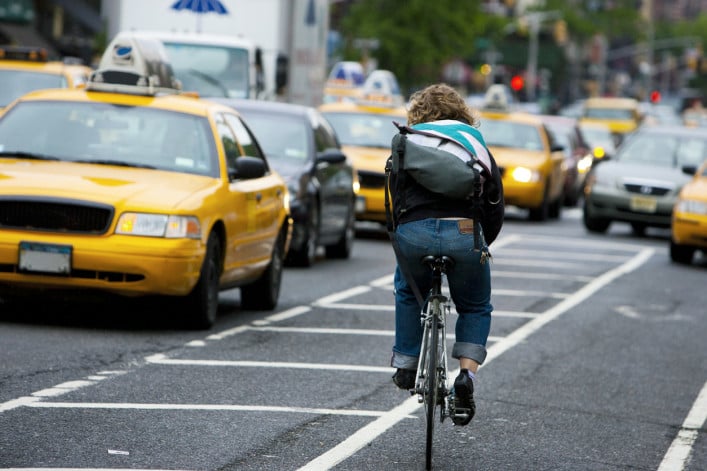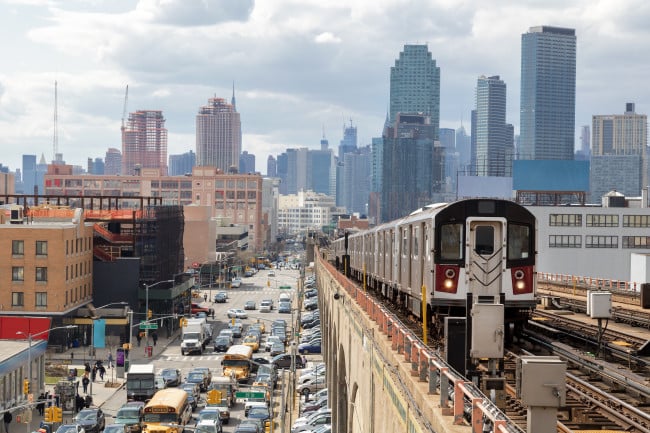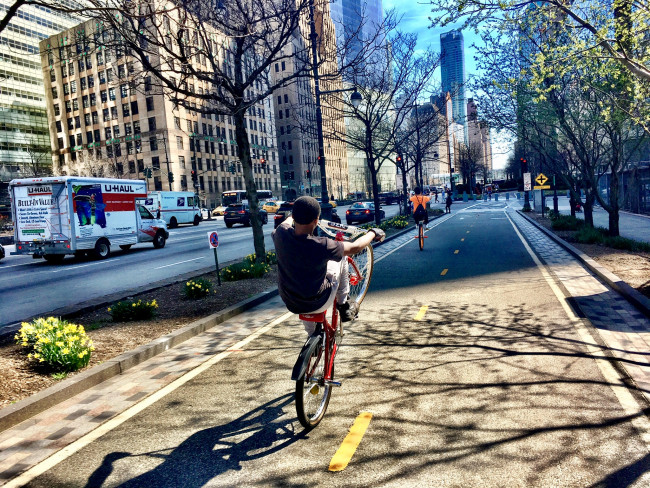Mapping NYC’s most dangerous intersections for cyclists

The most recent NYC cyclist death occurred today when a 30-year-old swerved to avoid an open car door and was struck and killed by a tractor-trailer truck.
iStock
A shocking total of 18 cyclists have been killed in New York City—almost double the number killed last year. The most recent death occurred today when a 30-year-old swerved to avoid an open car door and was struck and killed by a tractor-trailer truck.
Mayor Blasio recently announced a $58 million bike-safety initiative that will ramp up police protection at the 100 most crash prone intersections, renovate 50 intersections to calm traffic, and redesign areas where fatalities occur.
The DOT has not yet disclosed the intersections that will be part of the initiative. Home-search platform Localize.city analyzed every intersection in NYC and evaluated the number of bicycle injuries and fatalities for a five-year period through 2018.
Two recent cycling fatalities occurred at intersections considered to be among the most dangerous for NYC cyclists, one in Chelsea and one in Staten Island, according to Localize.city’s analysis.
Here are the top 10 intersections with most cycling injuries + fatalities for 2014-2018.
1. Sixth Avenue and West 23rd Street, Chelsea: 21 injuries
Despite a bike lane on Sixth Avenue that’s protected by parking, the sheer volume of trucks, buses, bikes, cars and pedestrians makes cyclists at this intersection particularly vulnerable.
“Twenty-third Street is wider than streets parallel to it, and it’s the main east-west route for delivery vehicles,” says Sam Sklar, an urban planner at Localize.city.“This multiplies the risks. While not reflected in our data from 2014 to 2018, this intersection was the location of a fatal crash between a cyclist and a truck driver just last month.”
2. Jay Street and Tillary Sreet, Downtown Brooklyn: 20 injuries (tied)
This is a crowded intersection along a key route for people cycling over the Manhattan or Brooklyn bridges. “While some bike lanes are marked, such a major bike route need to be protected with better marked lanes,” says Dan Levine, urban planner at Localize.city.
2. Atlantic Avenue and Bedford Avenue, Crown Heights: 20 injuries (tied)
“The bike lane on Bedford Avenue is not separated from traffic and is wedged between car-travel lanes. It’s unprotected on either side, and as riders cross the six-lane Atlantic Avenue, they’re expected to maneuver toward the curb. But often cars in a left turn lane actually turn back into traffic, creating a risk for cyclists,” says Sklar.
4. Third Avenue and East 14th Street, East Village: 18 injuries
New separated bike lanes along East 12thand East 13th streets should offer a safer route, at least for cycling crosstown.
“Even with bike lanes on neighboring streets and avenues, the high number of crashes shows this is a route many riders are travelling,” says Levine.
5. Chrystie Street and Delancey Street, Lower East Side: 17 injuries (tied)
“Chrystie Street has a two-way bike lane, and the lane closest to traffic rides against traffic flow, which is a huge design flaw,” says Sklar. “It doesn’t help that Delancey Street is extremely wide, as it accommodates car and bus travel to and from the Williamsburg Bridge. Additionally there isn’t currently any bike lane on this stretch of Delancey Street.”
5. St. Nicholas Avenue and West 141st Street, Harlem: 17 injuries (tied)
As one of the few places where a crosstown street crosses St. Nicholas Avenue, this intersection likely sees more turning cars and trucks, which can be especially dangerous for people on bikes.
“Bollards and better-marked crossings could help turning drivers see riders,” says Levine.
7. Allen Street and East Houston Street, Lower East Side: 14 injuries (tied)
“Cyclists and drivers approaching this intersection often have obstructed views because of the width of East Houston Street, plus the width of East First Street along with obstructed views from street trees and bus traffic that potentially blocks views for drivers and cyclists,” says Sklar
7. Graham Avenue and Grand Street, Williamsburg, Brooklyn: 14 injuries (tied)
“On narrow, crowded, business-lined Grand Street, riders contend with double-parked cars and trucks and blocked bike lanes,” Levine says
7. Jay Street and Myrtle Avenue, Downtown Brooklyn: 14 injuries (tied)
A bike lane was added in 2016 to help shore up the commuter route along Jay Street
“It is physically separated from the auto traffic and is wider than a typical bike lane,” Sklar says, “ though buses do use the bike lanes, too.”
7. Roebling Street and South 4th Street, Williamsburg: 13 injuries, 1 death
“Before 2017, the biking expressway over the Williamsburg Bridge ended at this chaotic intersection with poorly marked and inadequate bike lanes,” Levine says. “New protected lanes feeding to the bridge should make the route safer.”
Here are the top intersections for injuries in the Bronx, Queens & Staten Island
- 58th Street and Roosevelt Avenue, Woodside: 12 injuries; tied for 14th most dangerous intersection in city
- East 149th Street and Morris Avenue; and East 161st Street and Morris Avenue Melrose: 11 injuries, tied for 16th overall in the city
There are no bike lanes on Morris Avenue or any nearby parallel avenues. “People on bikes are forced to fight through chaotic traffic to get to the businesses, schools, and apartments along this street,” Levine says.
There’s no bike lane along either Roosevelt Avenue or 58th Street. Plus, traffic from Woodside Avenue connects with this intersection. “That adds in a wildcard element that makes traffic unpredictable,” Sklar says.
- Castleton Avenue and Clove Road, Port Richmond: 3 injuries, 97th most dangerous
“This intersection is the site of a recent fatality this month. It is important to note that the city clearly encourages Clove Rd. as a bike route, because the way the street is painted to allow bikes and cars to share the lanes in either direction. But this lane isn’t separated or protected. It’s a shared lane,” says Sklar.
You Might Also Like






























